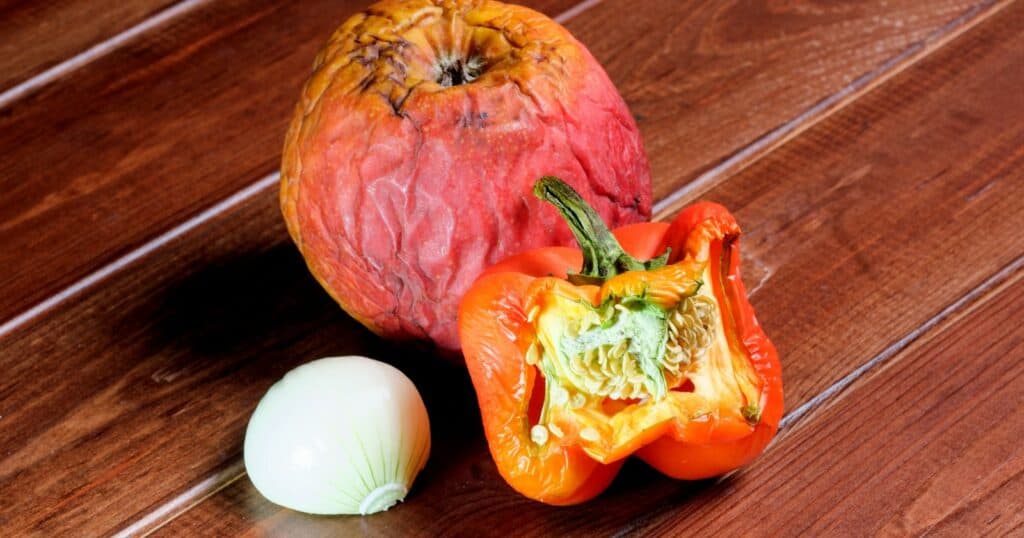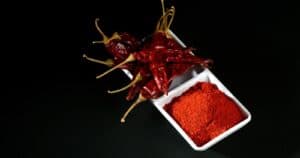You pull out a bell pepper to make lunch and notice its skin is shriveled and wrinkled. Now you’re wondering, are wrinkled peppers bad? Should you just throw them out?
While wrinkled pepper skin may not look very appealing, it does not necessarily mean the pepper has gone bad. Here are the key facts:
- Wrinkles alone don’t make peppers unsafe to eat. Wrinkled peppers can still be eaten raw or cooked as long as there’s no mold, soft spots, or foul odors.
- Wrinkling is often caused by plant stress from too much sun, underwatering, temperature shifts, etc. It causes the skin to shrivel.
- Wrinkled peppers may have lost some moisture and crispness, but they can be used in cooked dishes like roasted peppers, stews, salsas, etc.
- Storing peppers properly helps prevent wrinkling. Keep peppers refrigerated in a partially open plastic bag to maintain humidity and prolong freshness.
In summary, it’s fine to use wrinkled peppers as long as you inspect them closely and avoid any with signs of real spoilage. With care in storage and handling, wrinkles are merely a cosmetic issue.
This article will walk you through identifying if those wrinkled peppers are still good or need to be tossed. Learn the common causes of pepper wrinkling and how to prevent it with proper care. Find out the best methods for using up wrinkled peppers so none go to waste.
Discover the signs that truly signal when a wrinkled pepper has gone bad and is unsafe to eat. Get tips for diagnosing and resolving plant problems if your peppers are consistently wrinkled.
With the facts in this guide, you’ll feel confident about safely using wrinkled peppers thanks to understanding how to tell if they’re still fresh or have spoiled.
What Causes Peppers to Wrinkle?

Before determining if wrinkled peppers are still usable, it helps to understand what makes them wrinkle in the first place. Here are some of the most common causes:
- Underwatering – Peppers need consistent moisture. Insufficient water leads to dehydration and wrinkling.
- Overexposure to sunlight – Too much direct sun causes moisture loss and skin damage. Shade cloth helps prevent sun damage.
- Temperature fluctuations – Shifting between temperature extremes during growth stresses the skin.
- Overmaturation – Peppers left to mature past peak ripeness start to wrinkle.
- Incorrect storage – Incorrect humidity, lighting, or temperature during storage can cause wrinkling.
Knowing the underlying cause of the wrinkling can give you clues about the pepper’s freshness and flavor. For example, a sun-damaged wrinkled pepper may still taste good while an overmature one likely won’t.
Are Wrinkled Peppers Safe to Eat?
The most important question about wrinkled peppers is whether or not they are safe to consume. Here are some general guidelines:
- If the wrinkled skin is the only issue, the peppers should be perfectly safe to eat raw or cooked.
- Avoid peppers with soft or sunken spots. This could signal mold, rot, or other problems that make them unsafe.
- Watch for off smells or flavors. Wrinkled peppers that smell or taste unpleasant should be discarded.
- When in doubt, throw it out! It’s not worth risking illness over questionable produce.
As long as there are no other signs of spoilage, wrinkled pepper skin alone does not make them unsafe. Use common sense when inspecting them.
How to Use Wrinkled Peppers
While wrinkled peppers won’t be great for salads and raw applications, they can still shine in cooked dishes. Here are some of the best ways to use up wrinkled peppers:
- Chop and freeze – Dice wrinkled peppers to freeze for later use in chilis, soups, casseroles, etc. The frozen pieces won’t be affected by the wrinkles.
- Roast or sauté – Cooking brings out flavor and makes the skin issue irrelevant. roasted wrinkled peppers make great additions to sandwiches, dips, and more.
- Pickle – Wrinkled peppers retain good flavor and texture when pickled. They’ll last for months refrigerated.
- Can or jar – Cook and preserve wrinkled peppers via canning, jarring, etc. The skin wrinkles won’t matter after processing.
- Juice or puree – Process wrinkled peppers into flavorful juices, purees, sauces, and other smooth preparations.
Don’t let some superficial wrinkles stop you from enjoying peppers’ nutritional benefits in cooked dishes and preserves!
Signs That Wrinkled Peppers Have Gone Bad
Wrinkles alone don’t mean a pepper has gone bad, but they do have a shorter shelf life compared to perfect looking peppers. Watch for these signs that wrinkled peppers have spoiled:
- Soft, mushy spots – Healthy peppers feel firm. Mushy areas often mean mold or bacterial growth.
- Shriveled appearance – Severely shriveled, almost deflated looking wrinkled peppers are over the hill.
- Strong unpleasant scent – Rancid, sour, or rotten smells mean toss the pepper.
- Mold – Visible mold spots, even if localized, make the entire pepper unsafe.
- Discoloration – Wrinkled peppers turning shades of brown, grey, or black should not be used.
When examining wrinkled peppers, a little bit of common sense goes a long way. Rely on your senses of sight, smell, and touch to be the judge.
Storing Peppers to Prevent Wrinkling
While you can’t reverse wrinkles that have already formed, you can take steps to prevent new wrinkles during storage:
- Keep peppers dry – Pat peppers dry before storing to discourage mold and bacterial growth.
- Use breathable containers – Store peppers in mesh bags or perforated containers that allow air flow.
- Refrigerate below 40°F – Colder temperatures slow moisture loss and deterioration.
- Maintain humidity – Line containers with paper towels to keep humidity high.
- Avoid freezing temps – Cold storage below 32° can damage skins and cause pitting.
With proper post-harvest care, you can prolong the shelf life of fresh peppers and reduce new wrinkles from developing.
What If My Plant’s Peppers Are All Wrinkled?
Finding a few wrinkled peppers on an otherwise healthy plant is normal. But if your pepper plant seems to be producing only wrinkled fruit, there may be a cultivation issue causing consistent stress:
- Soil problems – Poor drainage, low fertility, or improper pH stresses plants. Test and amend soil.
- Under or overwatering – Ensure even moisture without drowned or dried out roots.
- Insufficient sunlight – Peppers need at least 6+ hours of direct sunlight per day.
- Extreme temperatures – Ideal growing temps for peppers are 65-85°F.
- Pests or disease – Check for signs of infestation and treat accordingly.
Ruling out environmental factors and providing better care can help your plant recover and produce strong, healthy peppers again.
Don’t Judge a Pepper by Its Skin
Mild wrinkling on the skin does not necessarily ruin a pepper or make it dangerous to eat. With these tips, you can confidently determine if those wrinkled peppers are still usable. Just be sure to closely inspect them and rely on your senses. And when in doubt – compost it and move on! With the right post-harvest handling, you can also reduce the chances of peppers wrinkling in storage.





